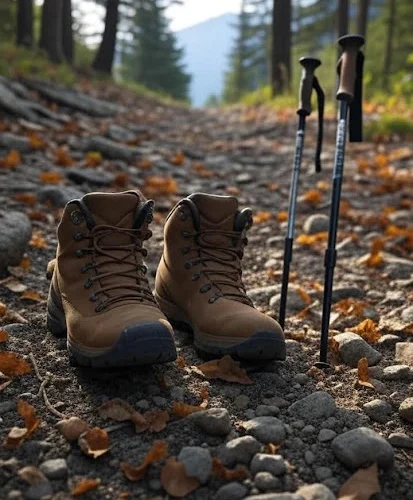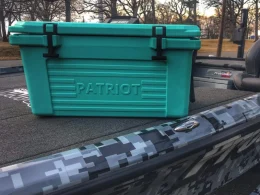Hiking boots can make or break your time on the trail. Picture this: you’re out there, breathing in fresh air, but every step feels like torture because your feet are blistered and soaked. Not fun. Good boots protect your feet, provide stability, and keep you moving comfortably. If you’re new to this, the options might overwhelm you-high-cut, low-cut, waterproof or not.
Don’t worry. We’ll break it down step by step. By the end, you’ll know exactly what to look for, how to try them on, and where to shop. Let’s get you geared up for adventure without the guesswork.
Table of Contents
Understand the Types of Hiking Boots
Boots aren’t one-size-fits-all. They vary based on your hike’s demands. Day hikes on easy paths? Go for hiking shoes or low-cut boots. These feel light, like beefed-up sneakers, and offer flexibility for quick moves. For rugged terrain or multi-day trips with a heavy pack, mid-cut or high-cut boots shine. They wrap your ankles for support, reducing twists on uneven ground. Think about your plans.
Casual weekend strolls call for lighter options. Serious backpacking demands sturdier builds. Trail runners work for speedy, light hikes but skip them if you need serious protection.
Focus on Fit: The Foundation of Comfort
Fit trumps everything. A boot that’s too tight pinches; too loose causes blisters. Start with your sock game-wear the hiking socks you’ll use on the trail when trying boots. Thickness matters. Measure your feet later in the day, when they’re slightly swollen, mimicking hike conditions. Aim for a thumb’s width of space at the toe to prevent jamming on descents.
Heels should lock in without slipping. Walk around the store. Climb stairs if possible. Feel for pressure points. Women’s and men’s boots differ in shape-narrower heels for women, broader toes for men-but try unisex if it fits better. Break them in gradually at home. Proper fit turns miles into enjoyment, not endurance tests.
Materials Matter for Durability and Breathability
What the boot’s made of affects weight, weather resistance, and longevity. Leather dominates for toughness. Full-grain leather withstands scrapes and lasts years but needs breaking in. Nubuck or suede offers similar durability with a softer feel. Synthetics like nylon or mesh keep things light and breathable, drying fast after splashes. They suit warmer hikes.
Waterproof membranes, like Gore-Tex, block water while letting sweat escape. Essential for wet trails, but they can feel stuffy in heat. Non-waterproof boots breathe better for dry conditions. Outsoles-Vibram rubber is popular-provide grip. Look for deep lugs for mud, shallower for rocks. Balance materials with your environment. Tough trails need rugged builds; hot climates favor airy designs.
Key Features to Prioritize
Boots pack features that solve real problems. These aren’t just add-ons; they boost safety and comfort on the trail. Here’s what to look for:
- Cushioning: Absorbs shock for less foot fatigue. EVA midsoles feel springy for lighter hikes, while polyurethane offers firmness for heavy loads.
- Shanks: Add stiffness underfoot, stabilizing your steps on rocky or uneven paths.
- Toe Caps: Guard against stubs when you kick rocks or roots, saving your toes from pain.
- Ankle Padding: Prevents chafing, keeping your ankles comfortable during long treks.
- Ventilation Panels: Combat sweat to keep feet dry, especially in warmer conditions.
- Weight: Aim for under two pounds per pair to stay nimble without extra strain.
- Eco-Friendly Options: Look for recycled materials if sustainability is a priority.
- Insulation: Traps warmth for cold-weather hikes, keeping toes cozy in low temperatures.
- Traction: Test outsoles (like Vibram) on different surfaces in-store to ensure grip on mud, rocks, or wet trails.
These features aren’t gimmicks. Pick ones that match your hiking style, and skip what doesn’t serve you.
Sizing and Width: Get It Right
Standard shoe sizes don’t always translate. Hiking boots often run half a size larger to accommodate swelling and thick socks. European sizing (like 42) differs from US-check conversion charts. Width options-narrow, regular, wide-prevent squeezing. If your feet are wide, brands like Keen or Merrell cater well. Measure both feet; one might be larger. Online sizing tools help, but in-store trials beat guesses. Remember, boots stretch slightly over time, especially leather. Tight at first? That’s okay if it’s not painful. Loose? Pass. Nail the size, and you’ll hike farther with happier feet.
Final Thoughts
Buying hiking boots doesn’t have to be intimidating. Focus on type, fit, materials, and features that suit your hikes. Start simple, try them out, and build from there. Good boots boost confidence, letting you soak in the views instead of nursing sore feet.












